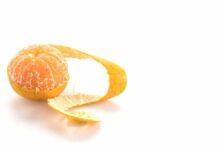
You probably don’t know it, but 1922 Nobel Prize for Physiology and Medicine recipient Otto Meyerhof may have played a significant role in your life. Have you ever heard that lactic acid is responsible for the burning sensation in your muscles while working out? If so, your life has echoes of his detached frog leg experiment.
But here’s the truth: Lactic acid is NOT the culprit for muscular fatigue and the burning sensation caused by vigorous muscular activity, as debunked in the 1980s. In fact, that soreness has a name you may also have heard: “DOMS” (rhymes with pom poms) or delayed onset muscle soreness. DOMS describes the sensations caused by microscopic muscular trauma sustained during exercise.
Okay, But What is Lactic Acid All About?
During exercise, your muscles need fuel. Muscles use a process called glycolysis which converts glucose into pyruvate, which is used in the citric acid cycle (also known as the Krebs cycle) to create cell energy. If there is insufficient oxygen, the pyruvate will become lactic acid, which then quickly separates into a lactate molecule and a hydrogen ion. The hydrogen escapes with your breath while the lactate molecule travels through your blood to your liver. There it undergoes a process called gluconeogenesis, which converts the lactate back into glucose.
Lactate also has other functions, such as being burned by cellular mitochondria for energy and (according to recent research) as a possible signaling hormone known as “lactormone.” More on that here.
But to sum up, lactate, which comes from lactic acid, has three functions:
- Energy source for mitochondria
- Precursor for producing glucose
- Signaling molecule (lactormone)
So Does Massage Flush Out Lactic Acid?
In a word, no. There is no lactic acid to “flush out” during a massage, as the stuff simply doesn’t hang around in the muscles after it’s produced. Instead, it breaks down, enters the bloodstream, and is either grabbed by the liver to create glucose, used by your body to regulate pH levels, or simply exhaled.
Massage has nothing to do with these processes.
But What About My Sore Muscles? Will Massage Still Help There?
Absolutely! Massage is proven to help reduce muscle soreness and decrease the time required to recover.
How? Massage increases blood flow to the muscles. As blood aids the healing process (remember that microscopic muscular trauma?), the increased circulation to the taxed muscles will help them heal faster and stronger, decreasing recovery time—and making it less painful.
The bottom line is this: lactic acid and lactate do not accumulate in muscles unless you’re examining those of a dismembered frog, or you have a (usually serious) medical complication such as hyperlactatemia or lactic acidosis.
But exercise-induced muscle pain IS real, and fortunately massage can work wonders in giving you a break from it, whether you’re a performance athlete or simply someone who likes a good sweat. Your muscles work hard for you—give them the healing reward they need!
Important Notice: This article was originally published at www.zeel.com by Melanie Peddle where all credits are due.
Disclaimer
The watching, interacting, and participation of any kind with anything on this page does not constitute or initiate a doctor-patient relationship with Dr. Farrah™. None of the statements here have been evaluated by the Food and Drug Administration (FDA). The products of Dr. Farrah™ are not intended to diagnose, treat, cure, or prevent any disease. The information being provided should only be considered for education and entertainment purposes only. If you feel that anything you see or hear may be of value to you on this page or on any other medium of any kind associated with, showing, or quoting anything relating to Dr. Farrah™ in any way at any time, you are encouraged to and agree to consult with a licensed healthcare professional in your area to discuss it. If you feel that you’re having a healthcare emergency, seek medical attention immediately. The views expressed here are simply either the views and opinions of Dr. Farrah™ or others appearing and are protected under the first amendment.
Dr. Farrah™ is a highly experienced Licensed Medical Doctor certified in evidence-based clinical nutrition, not some enthusiast, formulator, or medium promoting the wild and unrestrained use of nutrition products for health issues without clinical experience and scientific evidence of therapeutic benefit. Dr. Farrah™ has personally and keenly studied everything she recommends, and more importantly, she’s closely observed the reactions and results in a clinical setting countless times over the course of her career involving the treatment of over 150,000 patients.
Dr. Farrah™ promotes evidence-based natural approaches to health, which means integrating her individual scientific and clinical expertise with the best available external clinical evidence from systematic research. By individual clinical expertise, I refer to the proficiency and judgment that individual clinicians acquire through clinical experience and clinical practice.
Dr. Farrah™ does not make any representation or warranties with respect to the accuracy, applicability, fitness, or completeness of any multimedia content provided. Dr. Farrah™ does not warrant the performance, effectiveness, or applicability of any sites listed, linked, or referenced to, in, or by any multimedia content.
To be clear, the multimedia content is not intended to be a substitute for professional medical advice, diagnosis, or treatment. Always seek the advice of your physician or other qualified health providers with any questions you may have regarding a medical condition. Never disregard professional medical advice or delay in seeking it because of something you have read or seen in any website, video, image, or media of any kind. Dr. Farrah™ hereby disclaims any and all liability to any party for any direct, indirect, implied, punitive, special, incidental, or other consequential damages arising directly or indirectly from any use of the content, which is provided as is, and without warranties.








